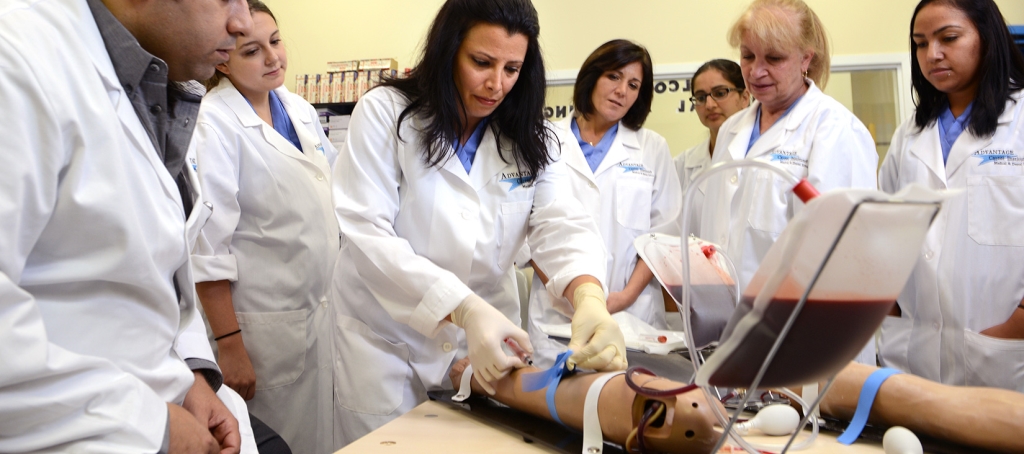**Title: Training To Draw Blood: A Comprehensive Guide for Healthcare Professionals**
**Introduction:**
Drawing blood is a common medical procedure that involves collecting a sample of blood from a patient for various diagnostic tests or treatments. Training to draw blood is essential for healthcare professionals, such as nurses, phlebotomists, and medical assistants, to ensure accurate and efficient blood collection while minimizing discomfort for the patient.
In this guide, we will explore the importance of training to draw blood, the steps involved in blood collection, the benefits of proper training, practical tips for success, and real-life case studies to illustrate the impact of quality training on patient outcomes.
**Importance of Training To Draw Blood:**
Proper training to draw blood is crucial for healthcare professionals for several reasons:
1. Patient Safety: Adequate training ensures that healthcare professionals can perform blood draws safely, reducing the risk of infection, injury, or complications for the patient.
2. Accuracy: Training helps healthcare providers to correctly identify and label blood samples to prevent errors in testing, diagnosis, and treatment.
3. Comfort: Skilled phlebotomists can minimize pain and discomfort for patients by using proper techniques and maintaining a calm and reassuring demeanor during blood collection.
**Steps for Drawing Blood:**
Drawing blood involves several key steps, including:
1. Prepare The Equipment: Gather the necessary supplies, such as needles, tubes, alcohol swabs, and tourniquets, in a clean and organized workspace.
2. Verify Patient Information: Confirm the patient’s identity, medical history, and any special instructions before proceeding with the blood draw.
3. Identify The Vein: Use proper techniques to locate a suitable vein for blood collection, such as the median cubital vein or the cephalic vein in the arm.
4. Clean The Skin: Disinfect the skin with an alcohol swab to reduce the risk of infection at the puncture site.
5. Insert The Needle: Use a smooth and swift motion to insert the needle into the vein at the correct angle for successful blood flow.
6. Collect Blood Samples: Fill the blood collection tubes in the correct order, following laboratory requirements for testing and analysis.
7. Remove The Needle: Apply pressure to the puncture site and secure a bandage to prevent bleeding or bruising.
**Benefits of Proper Training:**
Proper training to draw blood offers numerous benefits for healthcare professionals, including:
– Improved Patient Care: Skilled phlebotomists can provide high-quality blood collection services that contribute to accurate diagnoses and effective treatments for patients.
– Career Advancement: Advanced training in phlebotomy can lead to certifications, promotions, and opportunities for specialization in healthcare settings.
– Professional Development: Continuous learning and practice in blood drawing techniques enhance confidence, competence, and efficiency in healthcare practice.
**Practical Tips for Success:**
To excel in drawing blood, healthcare professionals can follow these practical tips:
– Practice Proper Hygiene: Maintain strict hygiene protocols before, during, and after blood collection to prevent infections and promote patient safety.
– Communication Skills: Develop effective communication skills to establish trust with patients, explain the procedure, and address any concerns or questions.
– Continuous Training: Participate in ongoing phlebotomy training programs, workshops, and seminars to stay updated on best practices, emerging technologies, and industry standards.
**Real-Life Case Studies:**
Case Study 1: A phlebotomist received specialized training in drawing blood from pediatric patients, resulting in improved comfort, efficiency, and accuracy in blood collection for young children.
Case Study 2: A nurse completed a refresher course in phlebotomy techniques, leading to a significant decrease in needlestick injuries, patient complaints, and blood sample errors in a hospital setting.
**Conclusion:**
Training to draw blood is a critical skill for healthcare professionals to ensure safe, accurate, and compassionate patient care. By mastering the steps involved in blood collection, healthcare providers can enhance their professional competence, patient outcomes, and career advancement opportunities. Continuous training, practice, and communication skills are essential for success in phlebotomy and promoting the well-being of patients in healthcare settings.
Remember to prioritize patient safety, accuracy, and professionalism in every blood draw, and seek opportunities for ongoing training and skill development to excel in this essential aspect of healthcare practice.
